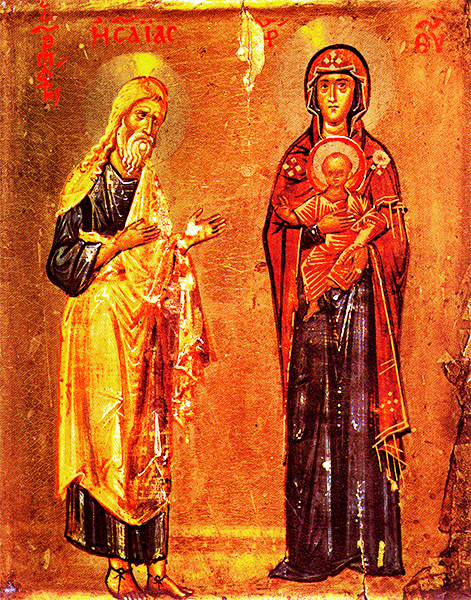The Theotokos (the mother of God) between the two…
The Theotokos (the mother of God) between the two Testaments the Old & the New
The Virgin Mary (the mother of God), is a bridge between the Old & the New Testaments. She is the vessel in which God the creator, was incarnated, to enlarge her depth so as to be the widest of all heavens. The prophets spoke of her eagerly and ardently. There are also images revealed of her by the Holy Spirit in the New Testament. Prayers and praises have been composed of her, for her sake. And many sermons have been delivered of her, too, for she is the prototype and the imitated figure by all.
The mother of God persevered on reading the Holy Scriptures; she freely accepted the Divine invitation given to her. In her complete obedience to the word of God, she returned the woman’s dignity that has been lost because of the fall.
She is a miracle that has amazed the knowledgeable and the learned.
About the 8th century B.C. a prophet stood amidst the crowds and announced a miracle and a sign from the Lord: “therefore the Lord himself will give you a sign: behold the virgin shall conceive and bear a son and you shall call his name Immanuel” (Isaiah 7 : 14 ).
The sign that has been mentioned in the Old Testament was fully fulfilled in the New Testament. It is the announcement of the mystery that has been hidden for ages, and a clear sign to the birth of the Lord Jesus Christ the savior.

Here let us notice four things:
A sign and miracle.
“The Lord himself gives you a sign.” The sign means something extraordinary. It was really marvelous and wonderful when the Lord himself was incarnated.
The Son.
The Son, here, Jesus Christ, is born of the Virgin and not of the seed of man. That is what God said to the serpent in Genesis “I make enmity between you and the woman. He smashes your head and you destroy his ankle” (Gen. 3: 15). Here he spoke of the savior who would come of Eve.
The Lord himself gives the sign, for he himself is the sign, and in him it is fulfilled; he comes and is incarnated not to save his people of Assyria, but rather, of the Devil and sin. He is the Lord and savior who came to the world.
3- The Virgin
The prophet said, “The Virgin”, and not “a Virgin”. Thus, she is specific and special. The Hebrew word is “Alma” with the definite article which means a little girl, the virgin; she also may be engaged. The term was translated into: “the Virgin”: “parthenos” in the Septuagint in Greek.
The word used by Isaiah the prophet was “Alma” to suit the Virgin Mary.
A notice:
In Hebrew, the word “Batoula” is used to designate a virgin who is not married, no matter how old she is. And the word “Isha”, for a woman who has reached puberty. And “Alma” is for the young girl who can be in charge of a religious responsibility (a dedicated girl), who is not married but might be engaged.
Immanuel
A Hebrew word that means “God is with us”.
In Isaiah chapter 6 we see God on his throne, while here we find him born of a virgin with us on earth.
